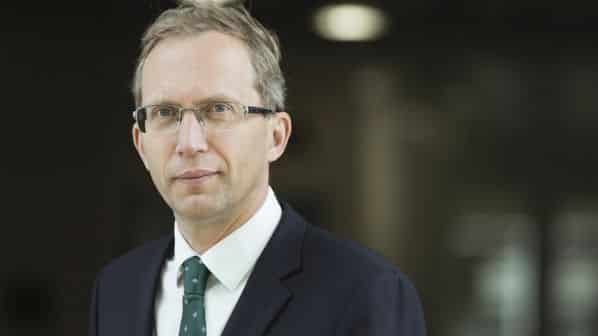THE last time IRJ sat down with Alstom president and CEO, Mr Henri Poupart-Lafarge, was at the end of January 2021, on the eve of Alstom completing the deal to acquire its one-time rival Bombardier Transportation.
Poupart-Lafarge described the €5.5bn agreement as a “once in a decade deal” at the time and said that it would take three to four years to completely integrate the two giants of rail manufacturing. So how has this work progressed?
Heading into year three Poupart-Lafarge says Alstom is “totally in line with its plan.” He speaks of successfully stabilising all of Bombardier’s projects and re-establishing good customer relationships, which was the first priority. The sale of Bombardier’s high-speed activities to Hitachi, and the Coradia Polyvalent or Regiolis platform and plant at Reichshoffen, France, along with the Talent 3 and associated production lines at Heningsdorf, Germany, to CAF have also been completed. Poupart-Lafarge says the focus is now firmly on improving internal efficiency, to make sure all Alstom sites, whatever their origins, are working at the highest possible level.
“This will be the theme for 2023,” Poupart-Lafarge says. “To accelerate the deployment of lean management, accelerate the deployment of best practices for engineering and so forth. Internally a lot of work has already been done on this.”
The 2021 interview also took place around 11 months into the Covid-19 pandemic and the global railway supply sector is continuing to be caught in the tailwinds of the crisis. The disruption to project delivery resulting from Covid lockdowns as well as unstable supply chains, especially in China, the global shortage of semiconductors, and the high cost of raw materials has increased the pressure on OEMs like Alstom and their sub-suppliers.
“There is nowhere now where we are too weak or too small.”
Henri Poupart-Lafarge
The war in Ukraine has added fuel to this fire. The rising cost of energy has had a significant impact on the balance sheets of manufacturers throughout the supply chain in the past six months or so as they contend with an unprecedented increase in costs; some SMEs have reported energy costs rising by up to 400% in recent months. The price of some basic components has also risen to record levels as the highest rates of inflation in living memory persist.
Poupart-Lafarge categorises these challenges into two areas: those that impact project delivery; and those that impact cost. While he says that normality does appear to be returning to supply as the Covid-19 crisis eases, his number one worry is the financial weakness of some of the company’s sub-suppliers.
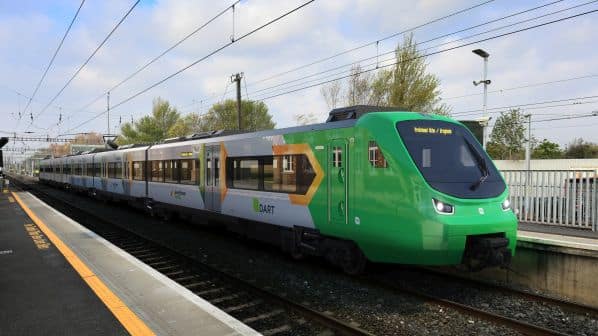
Poupart-Lafarge says the crisis has prompted numerous conversations on a “case-by-case basis” about how to tackle the difficulties and minimise disruption, describing the situation as “very complex.” He admits that Alstom has absorbed cost increases in some areas, while in others it has been protected by the terms of its contracts. Delays to some projects are almost inevitable. However, he says the company has managed to prevent these issues from impacting on day-to-day operations.
“It’s in our own interest as a leader to make sure that the whole industry stays on its feet,” Poupart-Lafarge says. “The most important thing for us is to ensure the good delivery of our products to our customers.”
To maintain consistency of supply, Alstom has tweaked how it works in some areas. For example, the supplier has modified the logistics chains serving its plants in Kazakhstan away from Ukraine, instead looking to tap into the Indian and Chinese markets.
Energy costs
Alstom has also taken steps to reduce its own energy costs. Poupart-Lafarge reports that the company has successfully cut energy consumption by 15% overall, with steps taken ranging from reducing the temperature in buildings, improving insulation and altering lighting, to more complex endeavours such as producing its own power at some locations.
While some are extraordinary changes and will cease as normality returns, Poupart-Lafarge says others will remain in place permanently. “Whenever you are confronted with these types of situations you find new ideas,” he says. “You then have to decide which ideas you are going to keep and which ideas you are going to drop.”
Poupart-Lafarge reveals that such measures might have taken five years to implement before the recent crises. Instead, they took three months, reflecting a new-found agility among staff.
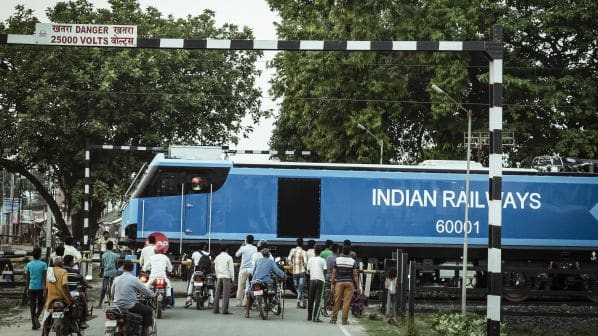
This is a trait that became commonplace in the early days of the pandemic. “The way we were working previously needed to be challenged,” Poupart-Lafarge says. He adds that the mindset has shifted from a project-to-project approach to a longer-term and more general view of supply. Employees are now regularly participating in what Poupart-Lafarge describes as “what if” scenarios which, he says, aim to nurture this imaginative and creative way of working.
He notes that this is particularly beneficial to Alstom as a global company. Successfully doing a job at home or in the office that previously would have only happened on-site is reducing the travel demands on key employees, increasing their flexibility, and Alstom’s ability to work effectively as a truly global supplier.
“The crisis definitely helped us break some conventional wisdom, such as testing the train,” Poupart-Lafarge says. “The guys in Le Creusot in France were testing the [Amtrak] high-speed train in the US. Previously they would not have thought about doing it without going to the US. But then you think about it, being on the train has little value. You can get all of the information coming from the train and then you can talk to the person who is riding on the train. There was a lot of resistance, but a lot of these systems have now changed because of the crisis situation.”
Market
The strained geopolitical situation and the Covid hangover meant that 2022 was a difficult year for many. However, Poupart-Lafarge is bullish about the rail sector’s general prospects.
He cites the continuing strong investment and pronouncements of support for sustainable transport by national and city governments across the world, whether this is for urban rail investment, inter-city and long-distance rail, or freight.
Alstom’s own financial performance backs up Poupart-Lafarge’s assertions. In third quarter results for the period from October 1 to December 31, Alstom reported €5.15bn in orders, with Services, Signalling and Systems accounting for 58% of the total. Orders worth €15.2bn were reported in the first nine months of the year, a 6% increase year-on-year. Sales also increased by 8% year-on-year between April and December to €12.27bn. Alstom’s order backlog as of December 31 was €84.6bn, which is expected to secure sales of €36-38bn over the next three years and achieve Alstom’s target of a compound annual growth rate of 5% in sales between 2020-21 and 2024-25.
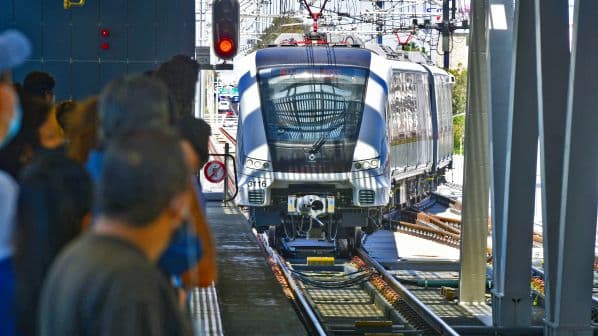
Highlights from the third quarter include orders for 49 trains from Renfe, 18 trains from Irish Rail, a locomotive and maintenance order in Kazakhstan, and an order for 312 metro cars from Delhi. Momentum appears to be continuing in 2023 with orders for 25 EMUs from Norske Tog among the early successes.
According to SCI Verkehr’s assessment of the global railway supply market, the acquisition of Bombardier has firmly established Alstom in second place overall. Its revenues in 2021 of more than €15bn were behind only CRRC, which recorded around €20bn, and significantly ahead of Siemens with €9.2bn.
The successful integration of Bombardier is central to Alstom’s pursuit of further growth.
Bombardier’s problems with delivery of several high-profile projects were well documented. Poupart-Lafarge says resolving these issues by delivering products with the level of quality expected was an early priority following the acquisition. He says steadily improving customer survey results demonstrate progress; the December survey produced feedback in line with the company’s global expectations for the first time.
The integration process is now moving into the efficiency stage. The deployment of lean management practices at the former Bombardier plants in Crespin, France, and at the Ciudad Sahagún plant in Hidalgo, Mexico, in December are key steps. Poupart-Lafarge says the plan is to roll this programme out across all of the former Bombardier sites within the next year to 18 months.
“The next step is to make sure that in a year, a year and a half, we are implementing all of the good practices in lean management and engineering and development at all of the Bombardier sites,” he says. “After that the integration will be more or less done.”
The combination of technology from both companies is evident in products Alstom is supplying in all markets, according to Poupart-Lafarge. He points to the example of combining Bombardier’s interlocking technology with Alstom’s ERTMS solution to improve the company’s competitiveness in the German signalling market, which Poupart-Lafarge describes as “one of the most important in the years to come.”
Bombardier’s flagship Traxx locomotive has also benefited from the introduction of Alstom’s onboard ERTMS unit. The hope is that Traxx will become more competitive with Siemens’ Vectron, which ironically also uses the Alstom onboard unit, and for which the German manufacturer secured a flurry of orders in 2022.
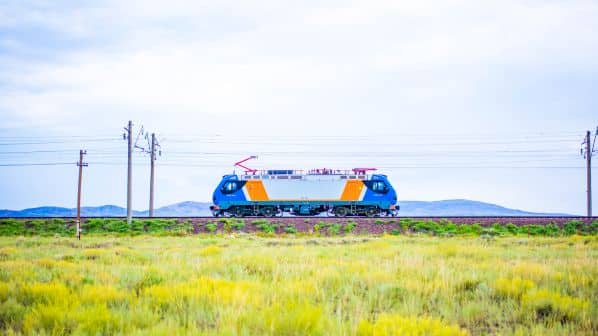
“It has taken us some time to replace the Bombardier system with the Alstom ERTMS system on the Traxx,” Poupart-Lafarge says. “We went out of the market a little bit. But the first Traxx with the Alstom onboard unit is now being released and we are now looking to re-enter the market.”
Alstom is also profiting from a larger manufacturing and engineering footprint. This is especially evident in North America where Poupart-Lafarge says Alstom “is benefiting a lot” from the addition of the engineering centre at St Bruno, Quebec, as well as various former Bombardier sites across Canada and the US. He says these are now working closely together to deliver North American projects, whether they originated from the Alstom or the Bombardier portfolio.
“Wherever we are, on all continents, in all markets, we have a pretty good size,” Poupart-Lafarge says. “There is nowhere now where we are too weak or too small.”
Innovation
Scale is one thing, but equally critical for future success is the capability to innovate. Innovation is one of the pillars of the Alstom’s 2025 strategy, which emphasises sustained investment in research and development. Large OEMs often find it difficult to innovate as effectively as smaller, more agile firms. Poupart-Lafarge says he is aware of these constraints but says Alstom operates in accordance with the Technology Readiness Level (TRL) to overcome this challenge.
The scale runs from one to nine, where one denotes theoretical or academic studies, where Alstom partners with various academic institutions, and nine is ready for market. At levels five and six, proof of concept, where agility is essential, Alstom engages with start-ups, encouraging these firms to work alongside it on projects, “allowing them to be agile for us.” The nine-month financial results also hint at Alstom’s flexibility to pursue growth opportunities through focused, bolt-on mergers and acquisitions, specifically in services and signalling. In addition, Alstom is a founding member of Europe’s Rail, which Poupart-Lafarge says is providing an essential framework for fostering collaboration to drive standardisation.
“We need to be a part of bodies that define the appropriate performance standards, such as ERTMS or TSI,” he says. “Shift2Rail can help arbitrate on the higher level TRL technologies, where we might have difficulty aligning with our competitors.”
Hydrogen
As for current areas of development, hydrogen traction has been a key focus in recent years as an alternative to diesel.
Alstom was the first manufacturer to introduce hydrogen-powered trains into commercial service when its iLint two-car hydrogen multiple- unit entered passenger operation in Germany in June 2022. This followed four years of pilot operation and Alstom has pushed for introduction elsewhere, securing additional iLint orders from Germany and Italy, and from France for a hydrogen variant of the Regiolis multiple-unit, a project that it continues to work on alongside CAF. It will also demonstrate the iLint in Canada later this year following similar trials in Austria, the Netherlands, France, Sweden and the Czech Republic.
Government and industry’s growing recognition of hydrogen as a viable alternative fuel source is encouraging for Poupart-Lafarge, especially the launch of large-scale development programmes in several countries around the world, which rail could potentially access. Bringing down the cost of hydrogen trains so they are more competitive is now the priority for Alstom, and Poupart-Lafarge says the manufacturer is actively working with its fuel cell partners and its customers to achieve this.
“We fought a long time to get the Fourth Railway Package and now we have it, we need to make sure that it brings results.”
Henri Poupart-Lafarge
“I think it is evolving at a normal pace,” Poupart-Lafarge says. “First we studied the technology and then we work on the cost. But one thing that is out of our control is the cost of production and the supply of green hydrogen… the cost of trains will mostly depend on the cost of green hydrogen.”
He offers a similar assessment of the need to reduce the cost of battery trains, which Alstom is also developing for applications of 80-100km between charges and for which he says the technology is roughly at the same level of maturity.
Mainline automation is another area that the railway sector is pursuing to provide extra capacity and reduce energy consumption. Poupart-Lafarge is buoyed by progress. Several milestones were achieved on projects in France and Germany in 2022, while the first demonstration of a driverless shunting locomotive at GoA4 in the Netherlands at the end of November was a big highlight for Alstom. The locomotive was able to operate and detect obstacles without the direct involvement of onboard staff.
“One thing that was new in 2022, which was not always present in the past, is that some operators are starting to talk about driverless ATO because of their difficulty in recruiting drivers,” he says.
In general, onboard ERTMS deployment on the European rolling stock fleet is progressing well, according to Poupart-Lafarge. However, he says the story is quite different for ERTMS infrastructure. Poupart-Lafarge hints at a new innovation project that will bring down the cost of deployment, which alongside a piecemeal approach to rollout, is a thorn in the side of delivering the Single European Rail Area, which remains tantalisingly out of reach.
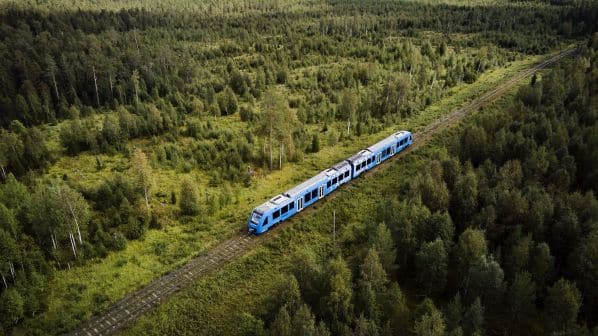
He is though a strong supporter of the Fourth Railway Package’s Technical Pillar and specifically the work of the European Union Agency for Railways (ERA) as the sole authority for vehicle authorisation in Europe. He says this provides a strong framework to finally end the need for compliance with hundreds of national rules, which slowed down the process in the past, as well as stabilising the process of updating the Technical Specifications for Interoperability (TSI).
“We fought a long time to get the Fourth Railway Package and now we have it, we need to make sure that it brings results, both in terms of acceleration and harmonisation, which offer added stability,” he says.
Poupart-Lafarge is similarly an advocate for greater awareness of the cybersecurity threat posed to railways by the growing adoption of internet-connected assets and systems. He says Alstom has invested significantly in this area and says that railways in general must be aware of and ready for the impact this will have on traditional business models.
“The way to do it in the past has been to have very stable software for 40 years,” he says. “Cybersecurity does not stand still, so we need to make sure that our trains are also secure for the next 40 years. This may require us to adapt the product but also the way of working.
“It’s our responsibility,” he continues. “We are not only working on common products, but we are also working with operators on their existing assets and systems. We want them to be totally secure.”
Alstom has not stood still in the past two years. Far from it. With the former Bombardier Transportation products and plants playing an increasingly important role, and with a burgeoning order book, the manufacturer appears well placed to challenge CRRC at the top of the global manufacturer charts. Size is not always everything, but it certainly helps.
